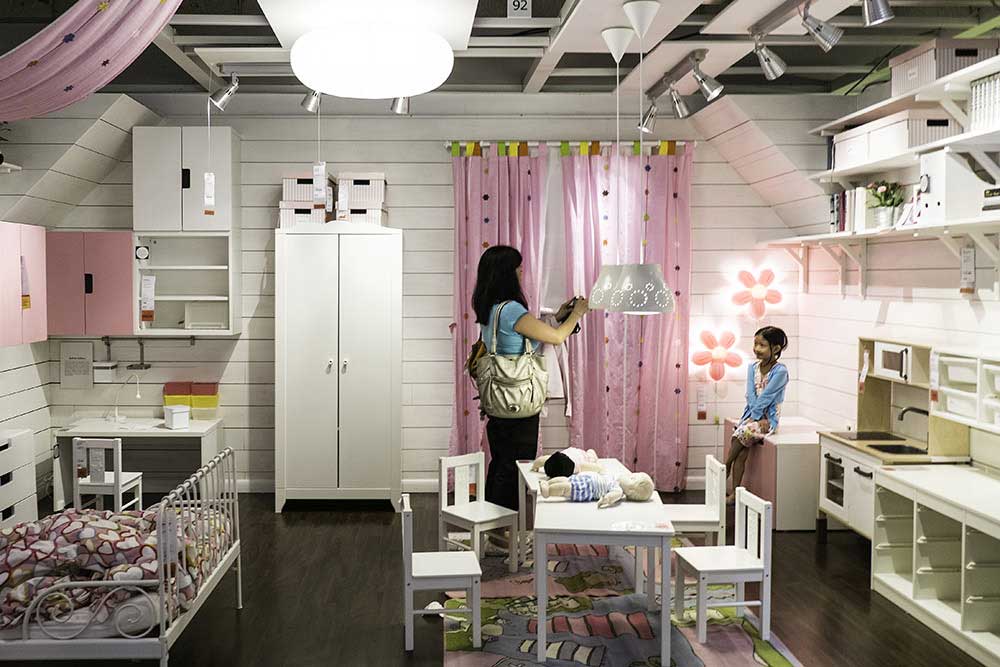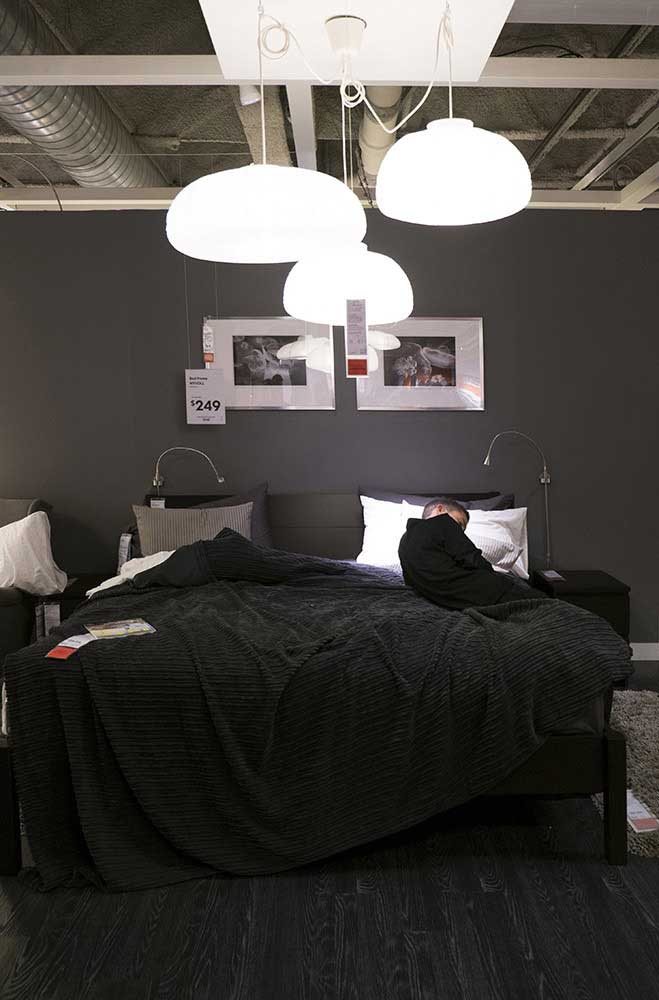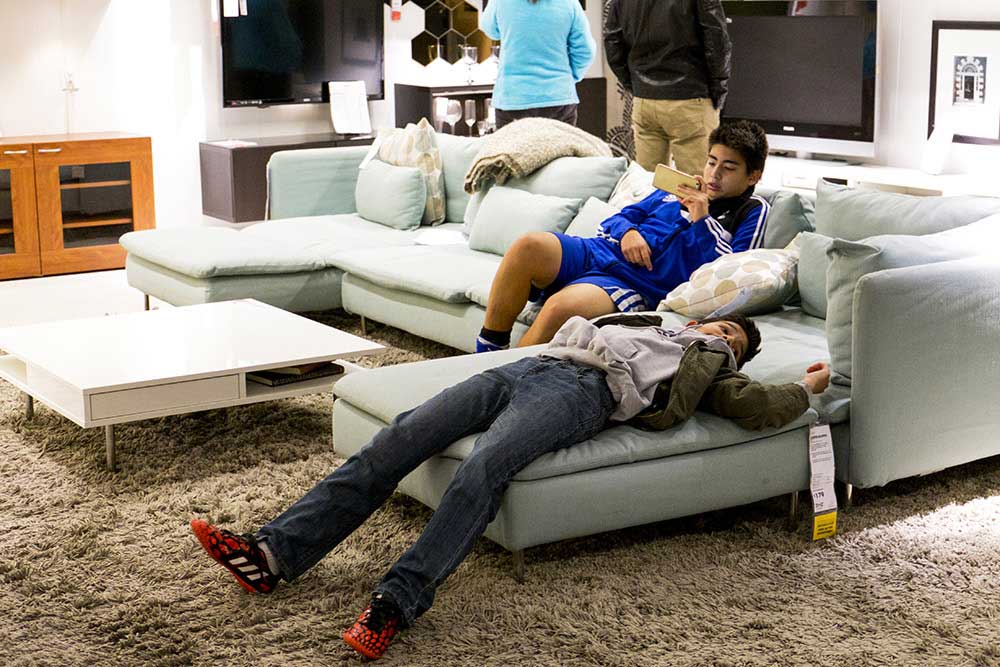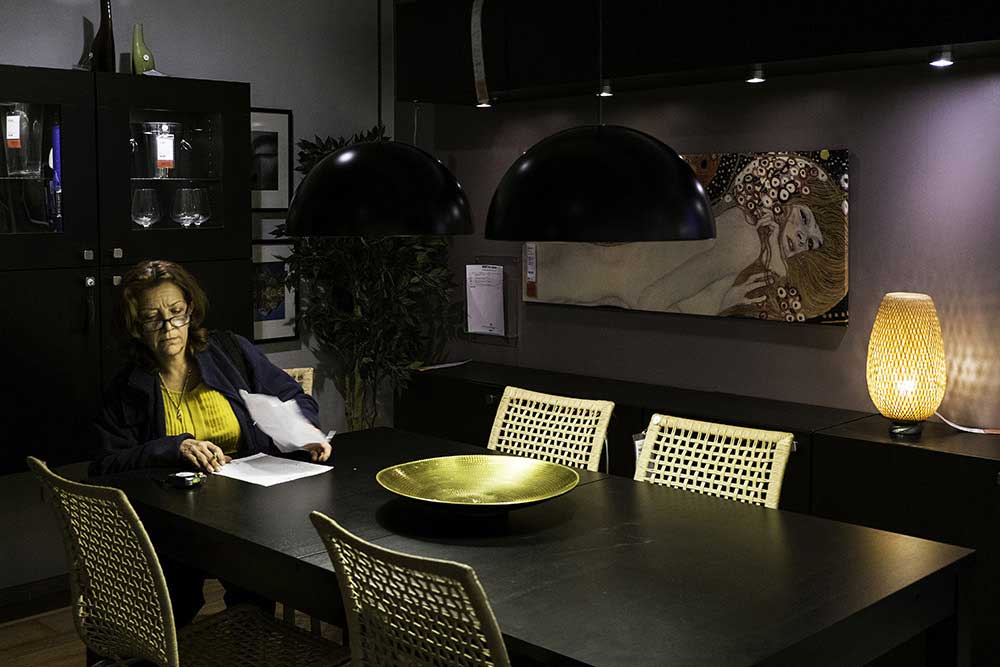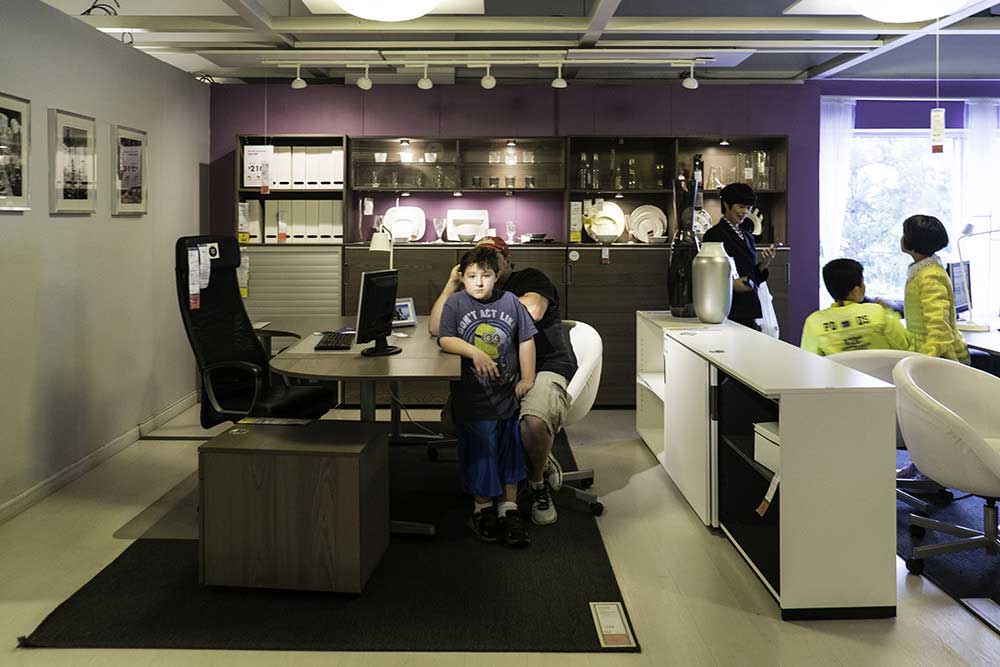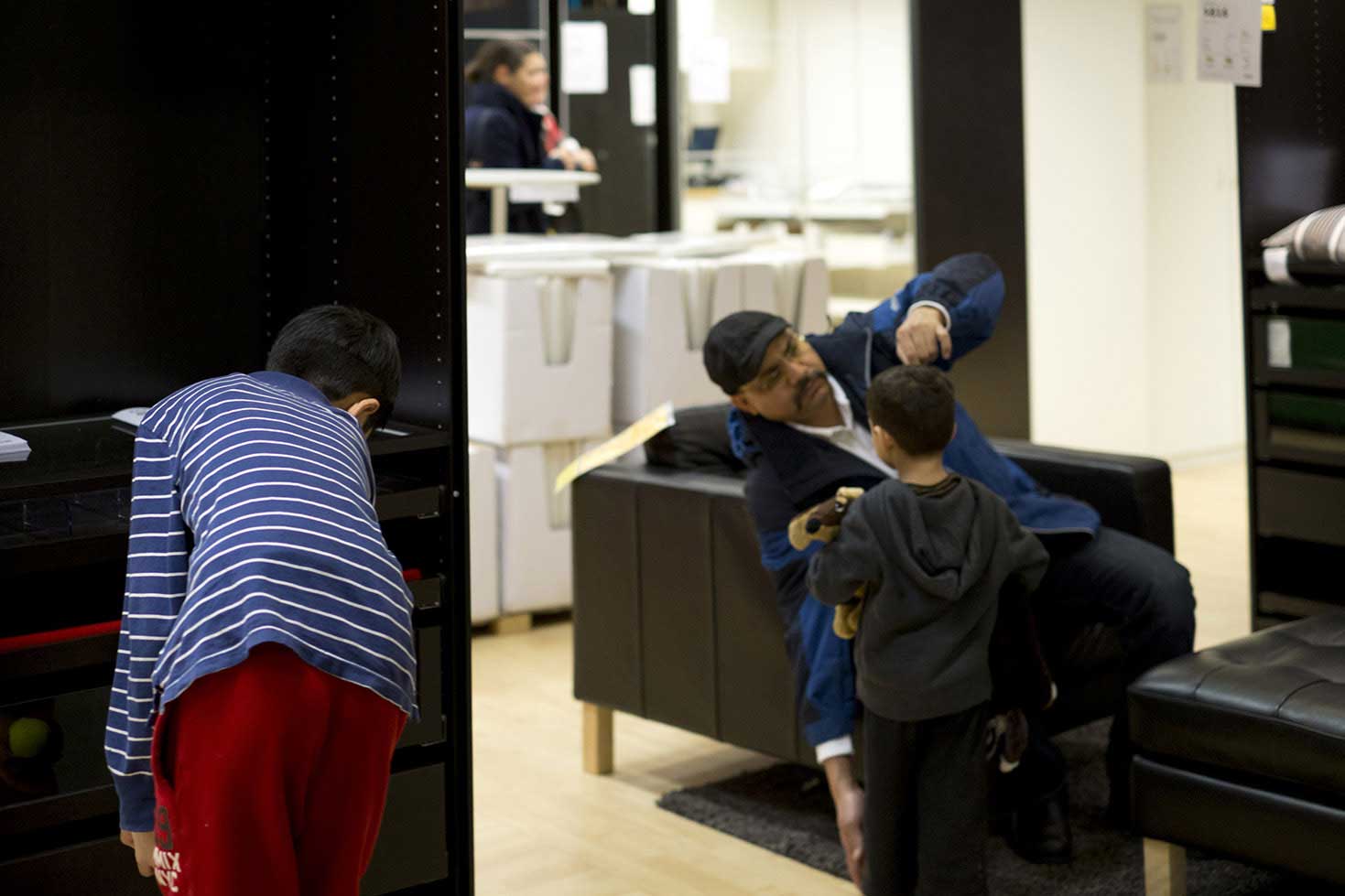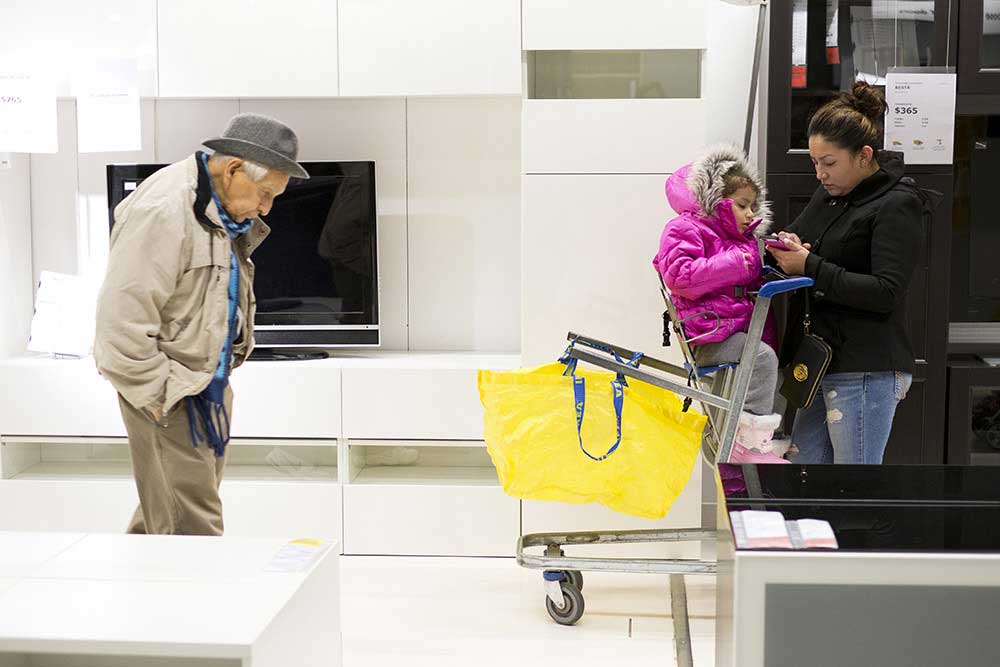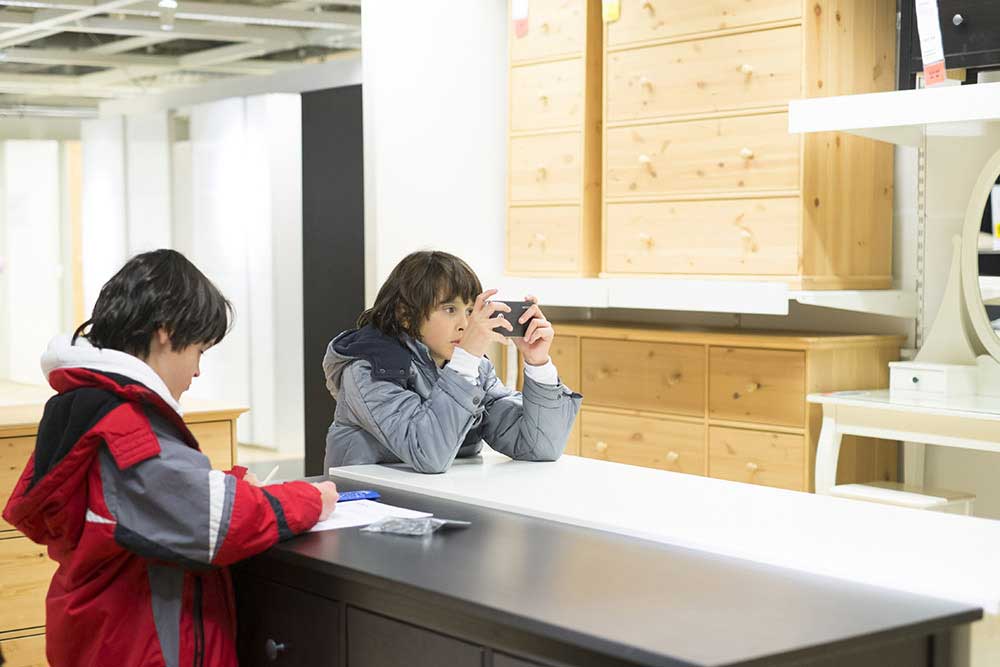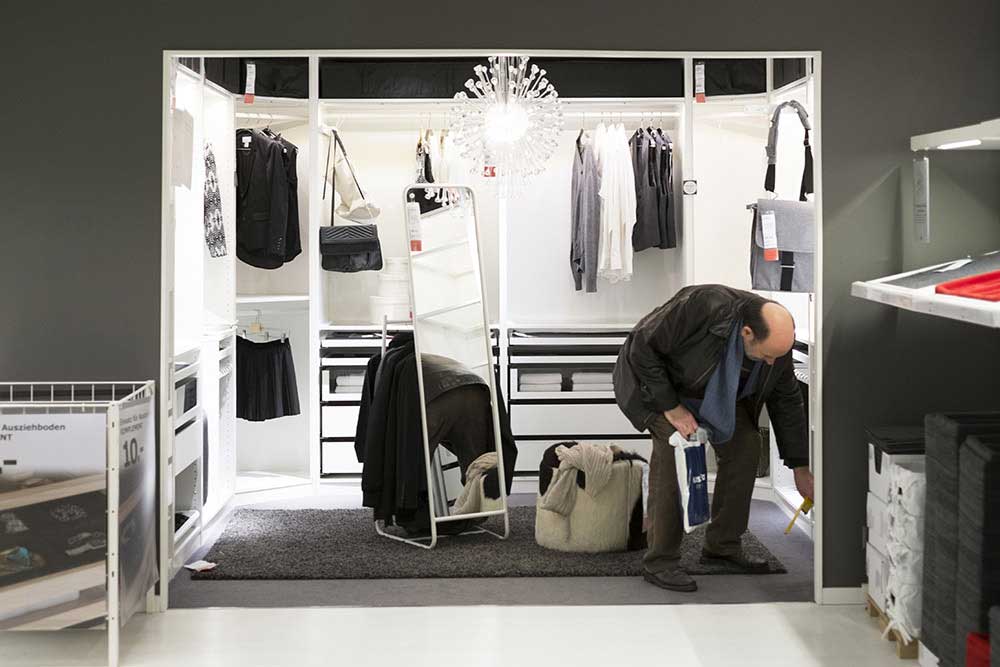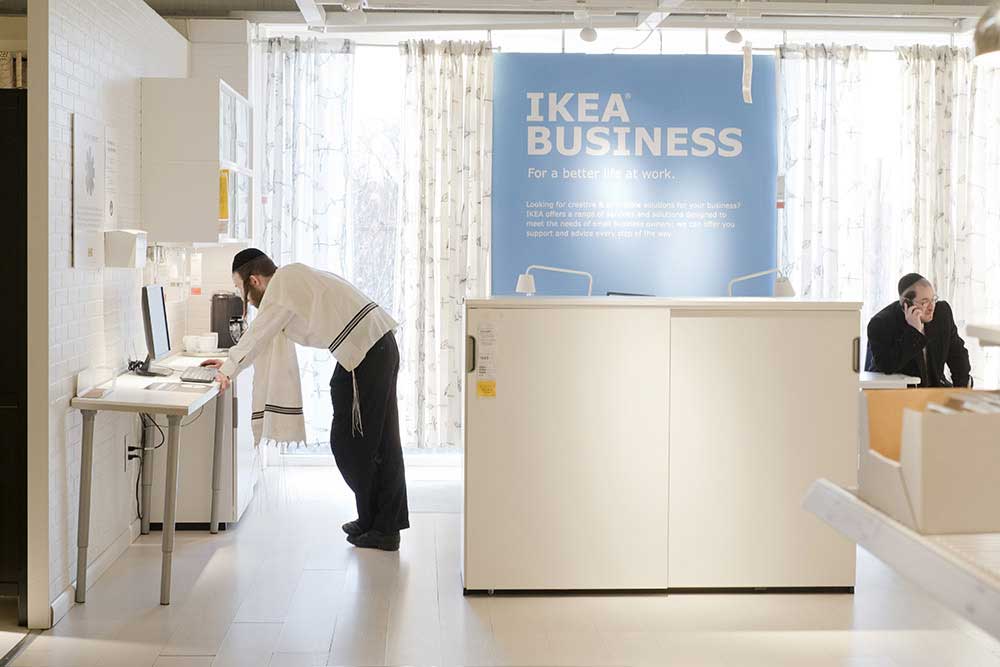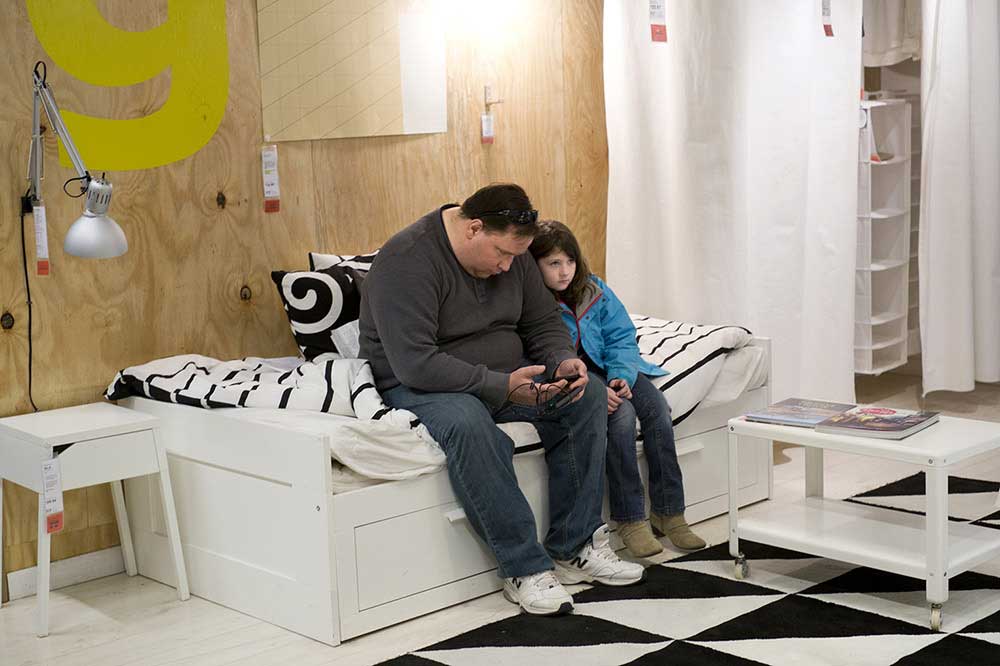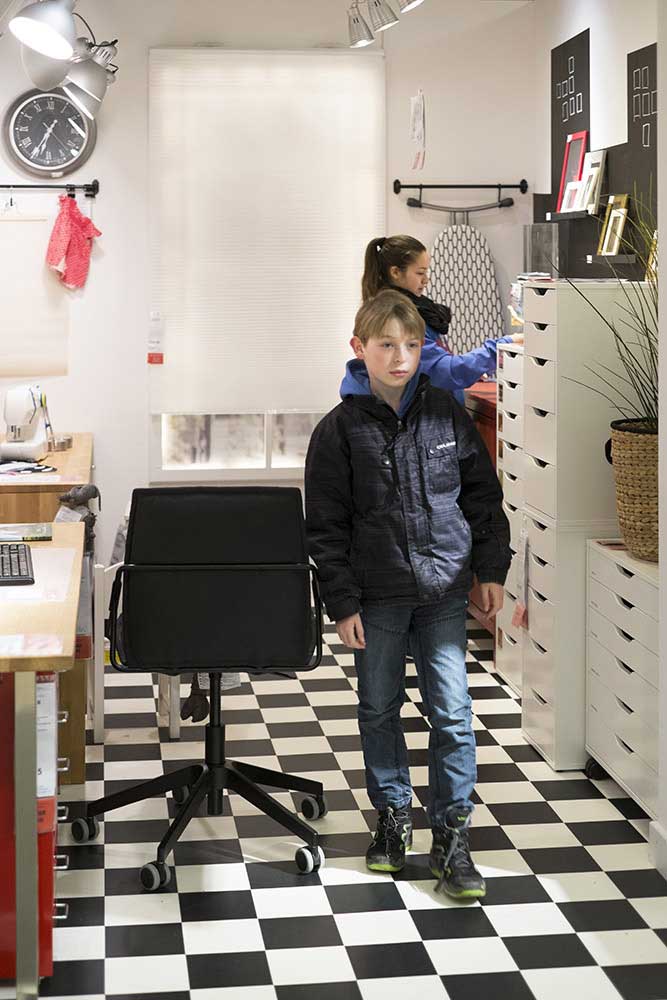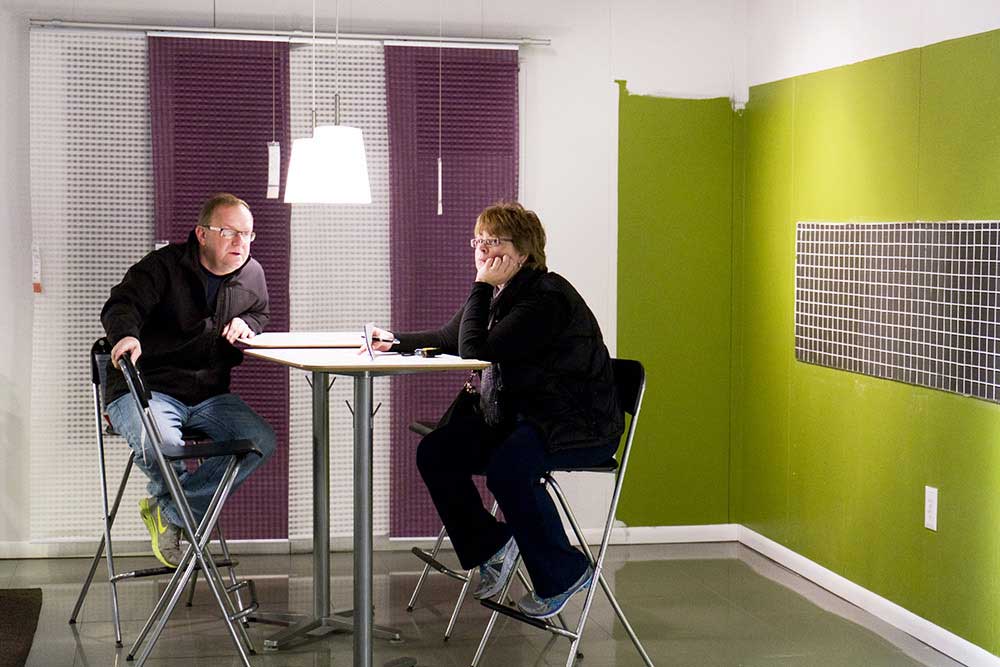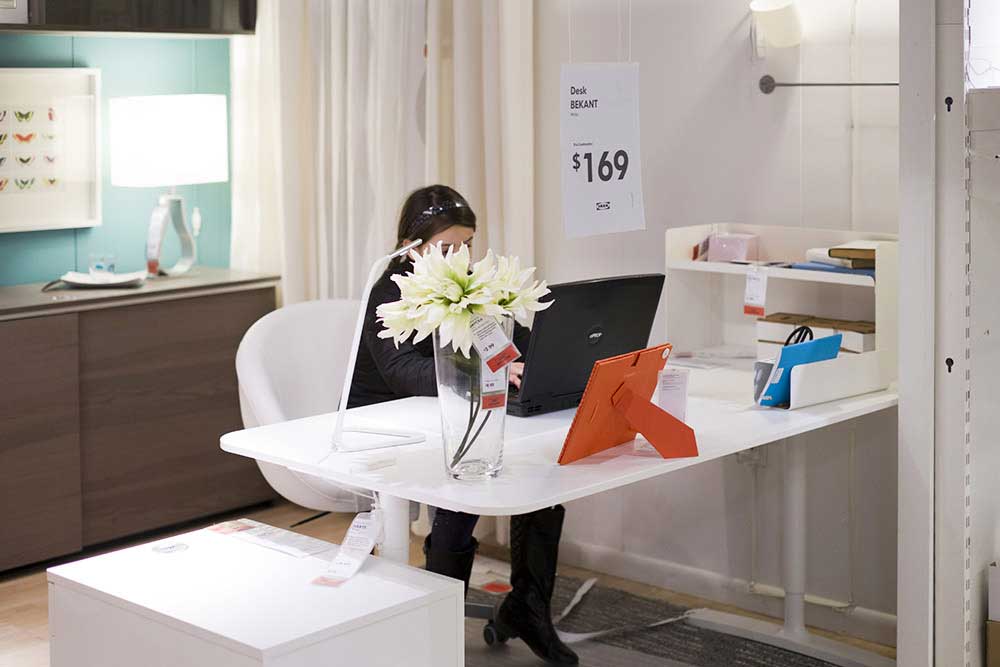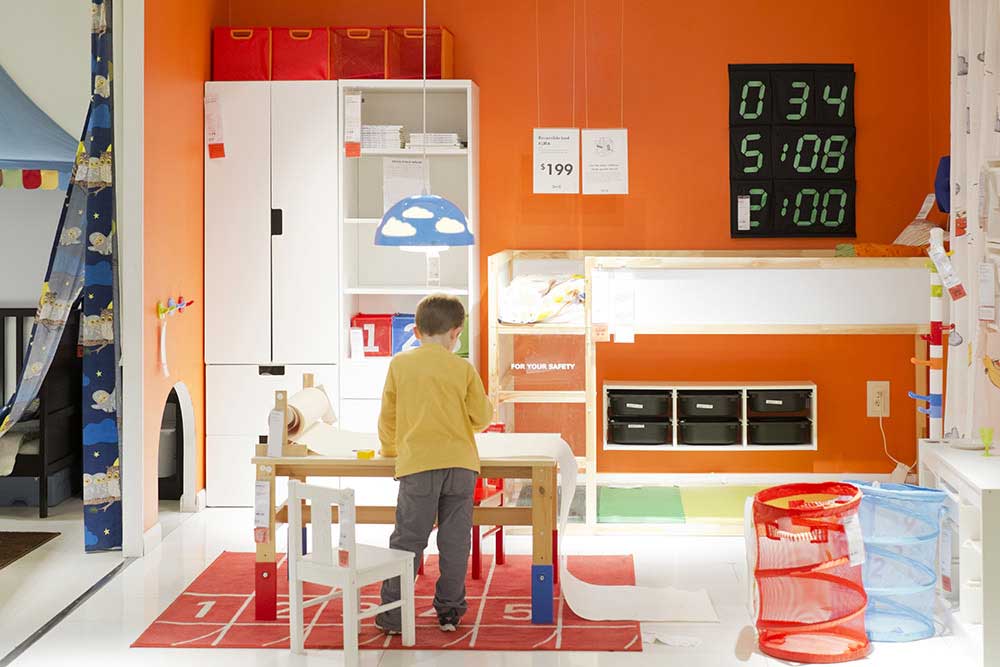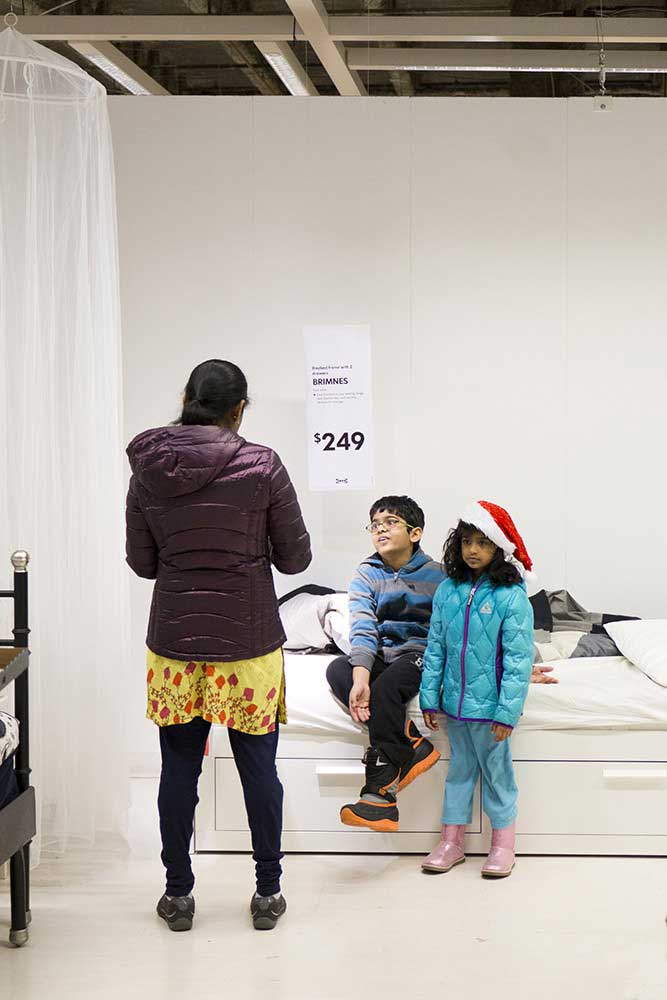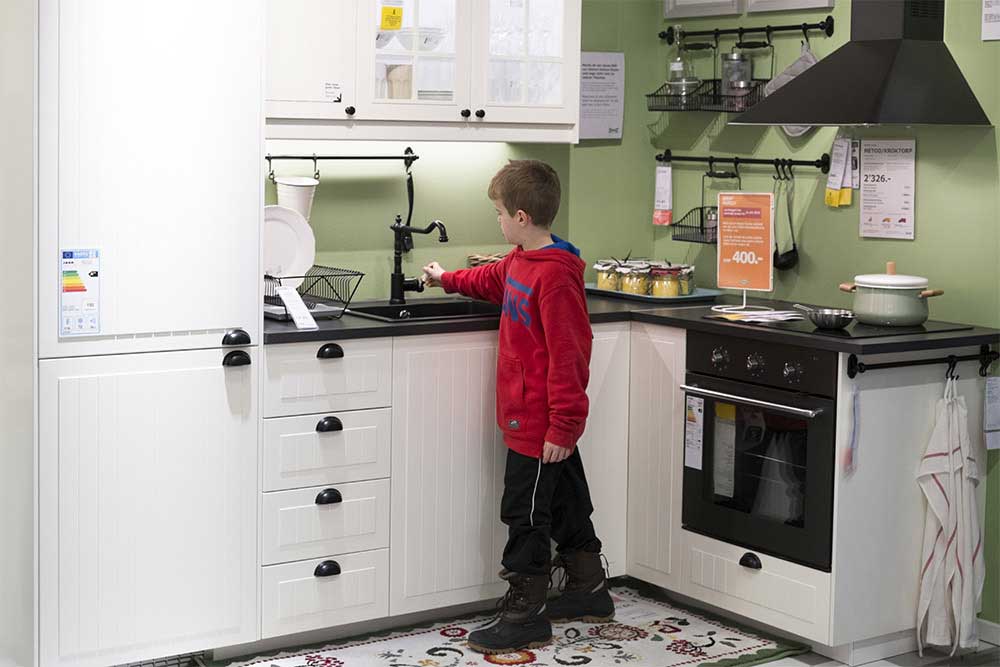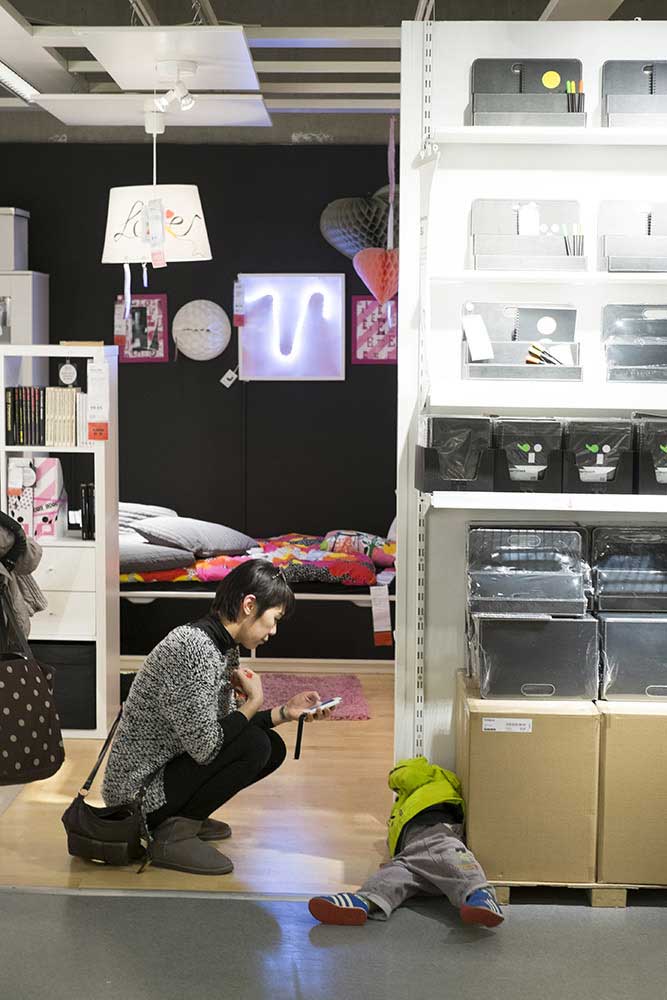The initial drive for Homemade is the stubborn desire the artist has felt to grow roots in the U.S.A, having moved to NYC from Switzerland a little over a year ago.
There are a variety of ways to ground oneself into a different culture, and the strategy that was first explored was taking laps around American IKEAs, flanked with a small camera and a shopping cart overflowing with colored paraphernalia, promising the perfect DIY home.
Having grown up next to a Swiss IKEA, the showrooms were so tangibly familiar, and she began to feel more at home in one of the model living rooms, filled with blank books and muted televisions, than in her new American living room snagged off of Craigslist. Quickly, a yearlong and obsessive project was born, which took the artist from the IKEA in Paramus, NJ to Spreitenbach, CH, lurking in the different staged living rooms and photographing families of shoppers in the intimacy of these price-tagged interiors. IKEA’s showrooms provided an accessible stage to observe the dynamics of various families and, with a stretch of imagination, an opportunity to observe them in their own living rooms through the lens.

The central tension in Homemade is in choosing to visually represent the fine line between a customer appraising a Malm bed, to moments later, an exhausted child napping in the same inviting spot. The way IKEA is designed, with its never-ending labyrinth of showrooms and welcoming plush armchairs and couches incites a desire to kick back and relax, imagining how different our life would be if this color-coordinated candy-hued living room we are lounging in were ours. This limit, between the scripted role we enact in public, pushing our cart in circles and mindlessly trying to locate IKEA’s famous meatballs, to the person we are in the intimacy of our home, was expressed in several ways throughout the series. The situations, always caught candidly, often offer glimpses into the customer’s intimate life, whether they are resting after a fight over which refrigerator to haul home, or innocently playing while their parents quibble about with measuring tapes. On the other hand, there was a strict desire to leave all the price tags in the images, allowing for the spectator to only be fooled for a millisecond. The customer could almost be at home, and certainly acts as such, but there are details in every photograph that remind us that we are in a public commercial space, and that these intimate gestures and actions are being witnessed by not only a photographer, but also a crowd of consumers.
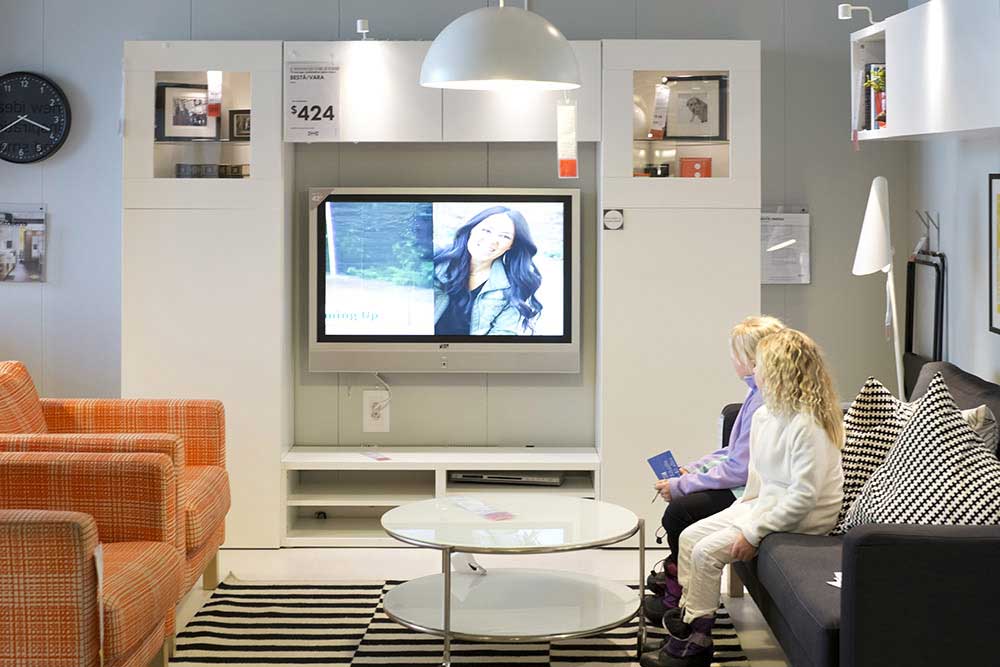
IKEA excels in marketing the intangible concept of homey, by selling DIY and affordable pieces of furniture that promise a certain Scandinavian serenity and quality of life. An interesting contrast to this story is the general opinion that building IKEA furniture often causes rifts in relationships and concerned calls to Customer Service, wondering if that last nail needed to complete the piece was lost in transit. In Homemade, IKEA’s success at marketing an abstract concept of feeling at home is acknowledged and highlighted, as the customers do seem, during the sixtieth of a second the camera allows them, to embrace this hominess and forget they are in a public space.
The series travels from the East Coast to Swiss Germany, and only little details indicate some photographs are taken in a different continent. IKEA’s universal uniformity is an aspect that always fascinated the artist, as since the layout and styling of the stores remain meticulously the same worldwide, one can then begin to think about how consumers of different cultures and countries interact differently with the furniture and showrooms, from an anthropological point of view.
In conclusion, Homemade is an exploration of public intimacy and marketed domesticity through IKEA labyrinths around the world, and the spaces explored for the series provided the artist with a conceptual and familiar living space upon moving from Switzerland to NYC. [Official Website]
